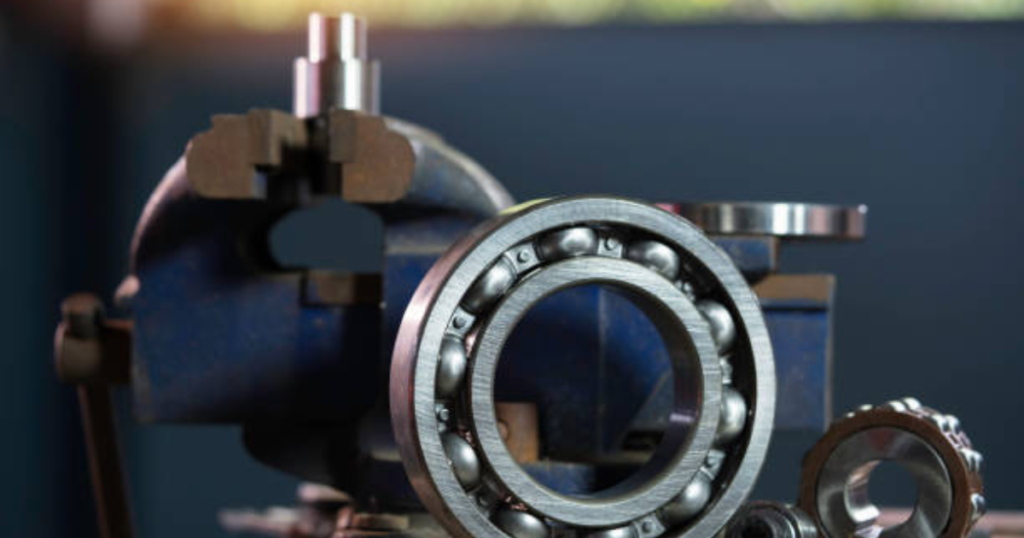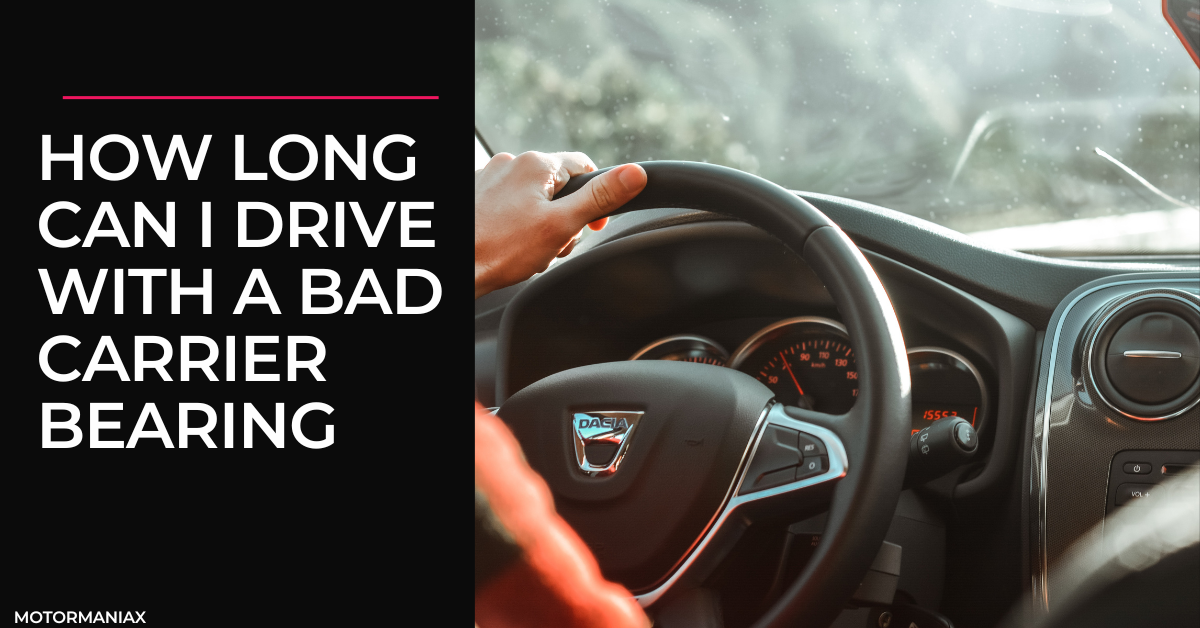Driving a car with anything not working efficiently can be dangerous and sometimes, fatal. However, there are some things that let you drive for a few miles even when they are not performing at full efficiency.
Carrier bearings are highly responsible to keep the vehicle smoothly functional. These bearings are on the back end of the car, if you have a rear-wheel drive vehicle. It is there as a driveshaft because all the other parts are linked to it.
If you have bad bearings in the car, you surely want to know about how long I can drive with a bad bearing. Here lies the answer!
Generally, you can drive up to 1,000 miles with the bad carrier bearing in the car. But it’s important to replace it as early as possible. If you don’t replace it timely, the damage would not only cost you more but also come with other concerns of fault.
Let’s find more about
What is a carrier bearing in the car?

In cars and vehicles the carrier bearings work as a support and it is found on rear-wheel drive vehicles. Between the drive shaft of the car and the metal shaft, the carrier bearings work as a link or bridge.
It makes sure the ideal power transfer to the rear differential which then sends the power to the wheel parts for smoother car drive. Generally, the fault with the carrier bearing is when they are damaged, worn out, and there is too much friction (no lubrication) within them.
What makes the carrier bearings faulty?
There are many factors that impact the carrier bearings for their smoother performance. Let’s read the common reasons below.
Poor or loose installation of the bearings
If the carrier bearings are not fitted tight enough, it can let out nothing but fault. Improper or lousy installation of the carrier bearings is the most common reason why you might be noticing odd car performance.
Collision or accident
The accidents of a vehicle put its various parts into the danger zone. For carrier bearings, when they get sudden collusion, damage, jerk, or impact, they can fail to perform.
Wear and tear
When there is too much wear and tear in the carrier bearing things become less durable and feebler. So, this puts an impact on the carrier bearing. The wear and tear causes friction and the component gets serious damage.
How do I know that carrier bearing is bad?
If the carrier bearing of the car is faulty or bad, you might notice excessive engine noise or sometimes the vibration can be noticeable too. It can also make the drive shaft misaligned. Moreover, the bad carrier bearing can also make the fuel economy fairly reduced.
Other signs are:
The check engine light will blink and here is how you will know that the carrier bearings are faulty.
- If the transmission fluid is leaking, it possibly means that the carrier bearings are bad.
- Tire wear can be another sign. So while checking the wheel check the tires if they are smooth or uneven. Usually the uneven wheel indicated towards the driveshaft misalignment which is causing the carrier breaking to become faulty.
- If you have to put a lot of orca while steering the car, it’s another sign that the driveshaft has gone poorly.
- Gears changing should be smooth, if not it can be another sign for fault in the carrier bearings. The reason is driveshaft or carrier bearings being misaligned
- The smell in his car means serious concern. It can be due to lots of friction and less lubrication, work-out bearing or overheating.
How do I replace carrier bearings?
Now when you know the reason and the sign of a bad carrier bearing your car, all you need to do is to replace it. But having basic knowledge of mechanics and heavy-duty is important. Otherwise get it done by a professional car mechanic.
Here is the step by step process.
- Park the car on leveled smooth ground and disconnect the battery. You can use the impact gun for removing negative terminals of the battery.
- Now fix the jack under the differential and lift up the tire from the surface. Don’t remove it.
- Loose the bolts with a socket set by holding the axle in place.
- Now bring the jack down till you see the differential on the skid plate or suspension.
- You need to get to the carrier-bearing bolt pattern when the differential is lowered to the right level.
- Set and ratchet to remove the surrounding bolts of the carrier bearings by using a socket. Now you should have total access to the old carrier bearings.
- Remove the bearings one by one and clean the grease, gunk etc. around the housing.
- Fix the new carrier bearings and position them rightly. Place the bolts and use torque to tighten
- Lift up the differential back with the help of jack. Make sure to tighten the axle bolts. That’s it. Now lower the jack carefully and get the car back on ground. Reconnect the battery that you have discounted.


1 thought on “How Long Can I Drive With A Bad Carrier Bearing? [Answered]”